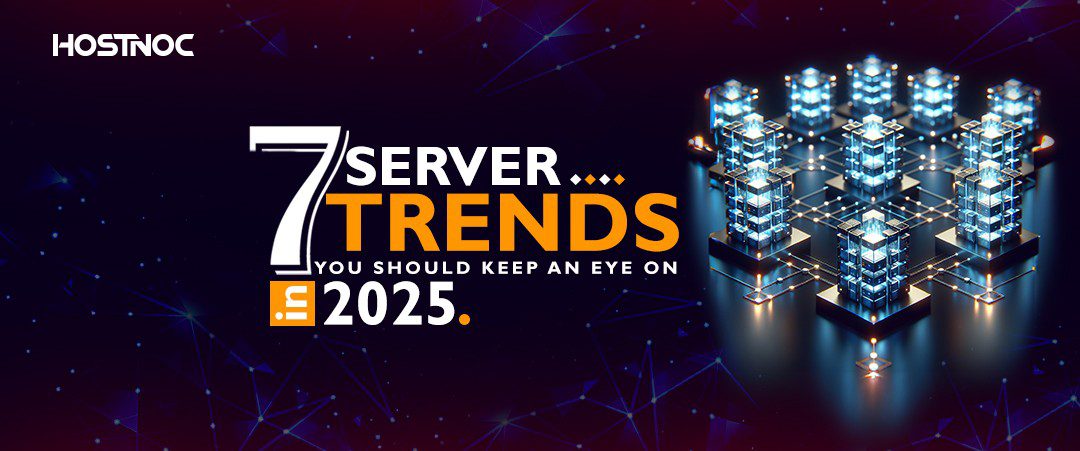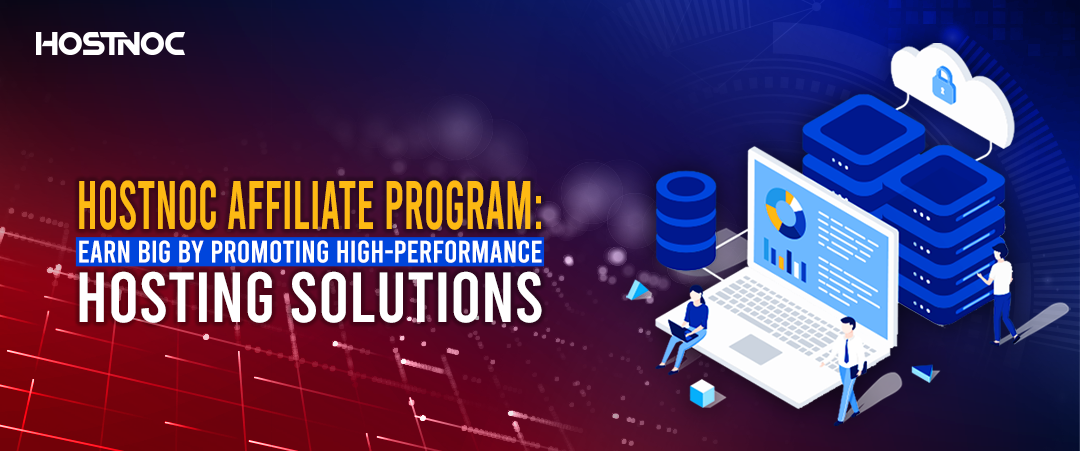Blogs
7 Server Trends You Should Keep an Eye on in 2025
Published by Muhammad Osama September 19, 2024 . 6 min read


7 Technology Trends to Watch Out For in 2025
September 10, 2024
6 Cloud Trends You Cannot Afford to Ignore in 2025
September 24, 2024As businesses continue to navigate the digital transformation journey, server technologies are evolving to meet growing demands for performance, efficiency and security. In 2025, the server landscape will see new innovations and approaches that will reshape data centers and IT infrastructures.
Understanding these trends is essential for organizations seeking to stay competitive. Here are seven server trends you should keep an eye on in 2025 along with insights from industry experts and relevant statistics to back up the claims.
- 7 Server Trends You Should Keep an Eye on in 2025
- Adoption of ARM-Based Servers
- Edge Servers for Decentralized Data Processing
- Liquid Cooling for Servers
- Serverless Architectures for Scalability
- AI-Enhanced Server Management
- Rise of Composable Infrastructure
- Sustainability in Server Design and Operation
7 Server Trends You Should Keep an Eye on in 2025
Here are seven server trends that you should keep an eye on in 2025.
Adoption of ARM-Based Servers
ARM-based servers known for their energy efficiency and high performance are becoming more attractive for data centers and cloud providers. Initially popular in mobile devices, ARM architecture has made significant strides in server environments, offering an alternative to x86-based systems.
Read more: Dedicated Hosting Server
Mark Papermaster, Chief Technology Officer at AMD, explains, “ARM-based servers are quickly becoming a disruptive force in the server market. They offer improved performance-per-watt and are ideal for workloads that require high efficiency. By 2025, we expect to see widespread adoption across hyperscalers and enterprises alike.”
According to Omedia, the ARM-based server market is expected to grow at a compound annual growth rate (CAGR) of 20.3%, reaching $5.3 billion by 2025. This growth is driven by the increasing need for energy-efficient solutions and the flexibility of ARM architectures.
Edge Servers for Decentralized Data Processing
With the growth of IoT, 5G, and artificial intelligence, more businesses are turning to edge computing to process data closer to where it’s generated. Edge servers, which operate at the network edge, help reduce latency, improve data security and enhance real-time decision-making capabilities.
Sachin Gupta, Vice President of Product Management at Cisco, says, “The rise of edge computing is driving demand for edge servers that can handle localized data processing. As the need for real-time analytics grows, particularly in industries like healthcare and manufacturing, edge servers will become a critical part of the infrastructure.”
According to Gartner, 75% of enterprise data will be created and processed at the edge by 2025 up from just 10% in 2018. This shift highlights the growing importance of edge servers in managing decentralized data and supporting AI-driven applications.
Liquid Cooling for Servers
As server densities increase, cooling remains a significant challenge. Liquid cooling is emerging as a more efficient alternative to traditional air cooling, providing better temperature control and reducing energy consumption in data centers.
Read more: How Infrastructure as a Service Can Deliver Value for Your Business?
Robert Bunger, Director of Data Center Standards at Schneider Electric, states, “Liquid cooling technologies are becoming increasingly necessary as servers generate more heat. It not only reduces energy consumption but also improves the performance of high-density servers. By 2025, liquid cooling will be a standard practice in data centers handling intensive workloads.”
Research from MarketsandMarkets estimates that the global liquid cooling market for data centers will reach $2.5 billion by 2025, growing at a compound annual growth rate of 26%.This surge is driven by the increasing demand for high-performance computing (HPC) and the growing awareness of energy efficiency.
Serverless Architectures for Scalability
Serverless computing, or function-as-a-service (FaaS), allows developers to build and run applications without managing the underlying server infrastructure. This approach is gaining popularity for its scalability, cost-effectiveness and ease of use, making it an attractive option for dynamic workloads.
Read more: 7 Web Hosting Trends You Should Keep An Eye On In 2024
Werner Vogels, Chief Technology Officer of Amazon Web Services (AWS), said, “Serverless architectures are transforming how we build and deploy applications. By 2025, more companies will adopt serverless technologies to eliminate infrastructure management overhead and accelerate development cycles, particularly for microservices-based applications.”
According to Grand View research, the serverless computing market is projected to grow from $7.6 billion in 2020 to $21.1 billion by 2026, at a compound annual growth rate of 22.7%. This growth underscores the increasing adoption of serverless technologies in cloud-native environments.
AI-Enhanced Server Management
Artificial intelligence is playing a growing role in server management, helping optimize performance, reduce downtime, and predict failures before they occur. AI-driven tools can automate routine maintenance tasks, monitor server health in real-time and improve overall efficiency.
Paul Speciale, Chief Product Officer at Scality, explains, “AI-enhanced server management is the next frontier for data center operations. By leveraging machine learning algorithms, organizations can predict hardware failures, optimize resource allocation and reduce operational costs. By 2025, AI-driven automation will become integral to server maintenance.”
A report from McKinsey estimates that AI-enhanced server management will reduce operational costs by 30% and data center downtime by 40% by 2025. These improvements reflect the potential of AI to transform how data centers operate and maintain their infrastructure.
Rise of Composable Infrastructure
Composable infrastructure allows businesses to dynamically allocate compute, storage and network resources on-demand, creating a more flexible and agile IT environment. This trend is particularly beneficial for organizations that need to support variable workloads and evolving business needs.
Ashish Nadkarni, Group Vice President of Infrastructure Systems at IDC, says, “Composable infrastructure is designed to offer the flexibility that traditional server setups lack. By decoupling resources and enabling them to be composed and recomposed as needed, organizations can achieve greater agility and efficiency. By 2025, composable infrastructure will be a key enabler of digital transformation.”
According to research, the composable infrastructure market worth $4.82 billion in 2022 is expected to grow at a compound annual growth rate of 21.8% from 2023 to 2030, reaching $23.36 billion by 2030. This growth is driven by the increasing demand for scalable and flexible IT infrastructures that can support diverse workloads.
Sustainability in Server Design and Operation
As environmental concerns become more pressing, data centers are under pressure to reduce their carbon footprints. Sustainable server designs that prioritize energy efficiency and the use of renewable energy sources are becoming a key focus for organizations looking to meet green targets.
Christian Belady, Vice President and Distinguished Engineer at Microsoft, remarks, “Sustainability in server design is no longer a nice-to-have; it is a necessity. By 2025, companies will be prioritizing energy-efficient servers and investing in sustainable data center practices including the use of renewable energy and circular economy principles for hardware management.”
A report by Uptime Institute indicates that more than 50% of new data center builds will prioritize sustainable design by 2025 with a focus on reducing energy consumption by 30%. Additionally, 60% of organizations will aim to be carbon-neutral in their data center operations by 2030.
Conclusion
The server landscape in 2025 will be shaped by innovations that address performance, scalability, efficiency and sustainability. From the adoption of ARM-based servers and the rise of edge computing to advancements in liquid cooling and AI-enhanced management, these trends will have a profound impact on how organizations manage their IT infrastructure.
Staying ahead of these developments will be crucial for businesses looking to remain competitive, reduce costs and meet the evolving demands of the digital era. By keeping an eye on these seven server trends and integrating them into your infrastructure strategy, you can ensure that your organization is well-positioned to take advantage of the latest technological advancements and achieve greater operational success.
Which of these server trends will make the biggest impact in 2025? Share your predictions with us in the comments section below.






